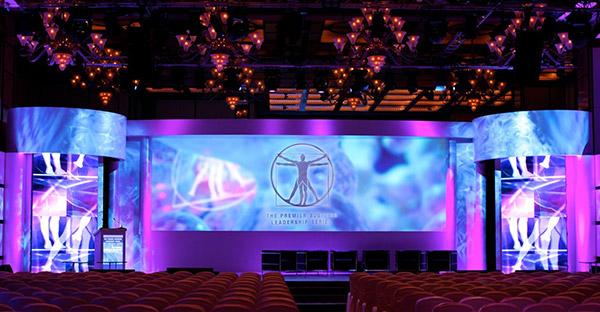Examining the Diverse Integration Options Available for LED Wall Panels
Examining the Diverse Integration Options Available for LED Wall Panels
Blog Article
LED display units have gained popularity for their ability to deliver high-quality imagery in multiple settings, from corporate environments to entertainment venues. One of the most significant aspects of these panels is their interface capabilities, which allow users to connect them to multiple devices and systems. Understanding the diverse connectivity options supported for Light Emitting Diode wall panels is vital for maximizing their use and effectiveness. This article explores these options, showcasing how they can adapt to specific needs and preferences.
One frequent connection approach for LED wall panels is High-Definition Multimedia Interface. HDMI is widely known for transmitting high-quality video and audio streams between devices. This connection type is especially useful in commercial environments, such as conference rooms or classrooms, where visual content or video content are often shared. By using HDMI cables, operators can easily link laptops, projectors, and streaming equipment to Light Emitting Diode wall panels, ensuring a clear and dynamic presentation of information.
Another popular interface method is DisplayPort, which is similar to High-Definition Multimedia Interface but offers additional advantages. Display Port can support elevated refresh rates and resolutions, making it an excellent choice for interactive media or design-heavy applications. For those using LED wall panels in settings where output quality is essential, such as esports arenas or creative workspaces, Display Port can provide the necessary visual quality. Moreover, many contemporary computers and graphics cards feature DisplayPort connections, making it website link a practical solution for technology-oriented professionals.
In addition to HDMI and Display Port, cordless connectivity options are becoming increasingly common in Light Emitting Diode wall panel technology. Cable-free connections allow operators to share content without the requirement for physical cables, promoting a cleaner and more flexible configuration. Platforms such as wireless internet and Bluetooth enable users to link smartphones, tablets, and laptops seamlessly to Luminescent Diode wall panels without tangled wires. This versatility is especially beneficial in dynamic settings like exhibitions or live functions, where rapid changes to displays are often required.
For larger installations or more complex configurations, LAN integration linked here through wired networking is another reliable solution. Ethernet connections provide a stable and reliable way to integrate multiple Light Emitting Diode wall panels within a system. This approach is suitable for digital signage applications found in shopping malls or airports, where multiple panels may need to present coordinated content across a broad area. By using Ethernet cables and routing hardware, users can ensure that all connected panels receive consistent updates and content efficiently.
Finally, it's crucial to consider the evolution of connectivity with technologies such as Universal Serial Bus-C and Thunderbolt Three. These newer interfaces offer increased data transfer rates and versatility by allowing one cable to handle both energy transfer and data transmission. As more devices incorporate these standards, LED wall panels equipped with Type-C ports will likely become more common. This shift in connectivity not only enhances the capabilities of LED wall panels but also aligns with the growing trend of minimalistic design in technology setups by reducing the number of wires needed.
In summary, examining the diverse interface options available for Light Emitting Diode wall panels reveals many possibilities for users across various industries. From conventional approaches like High-Definition Multimedia Interface and Display Port to contemporary cordless technologies and LAN setups, each pathway serves specific functions suited to distinct needs. Furthermore, next-gen technologies like Universal Serial Bus-C offer further developments in how users interact with LED wall panels. By grasping these connectivity choices, individuals can make strategic selections that optimize their overall engagement with these multifunctional visual solutions.